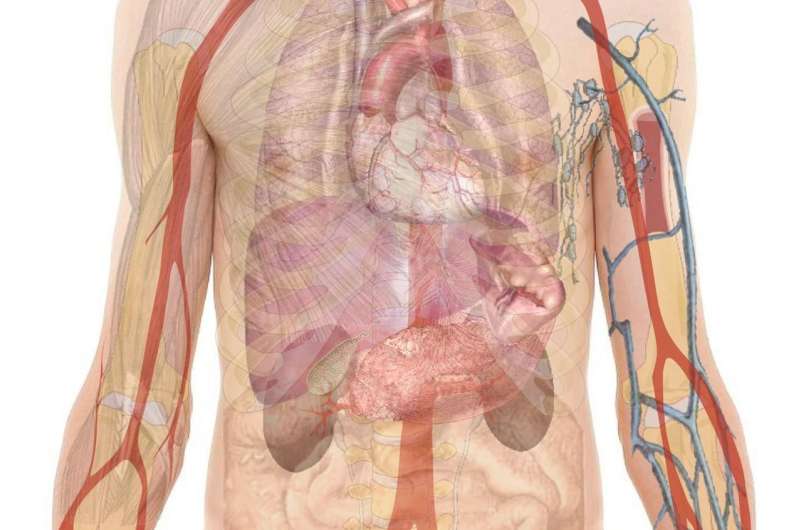Engineer develops 'micro-swimmer' with goal of navigating blood system

Science fiction through the ages has inspired scientific discoveries, such as human flight, interplanetary travel or, in this case, a microscopic submarine than can navigate the bloodstream for medical reasons.
So, on the 50th anniversary of the movie "Fantastic Voyage" - a sci-fi classic that has Stephen Boyd and Raquel Welch piloting a miniaturized submarine through a scientist's body to remove a brain clot - a University of Pittsburgh engineer has announced his success in developing an "acoustic bubble-power micro-swimmer."
The drone-like device, the width of a human hair, represents one of various methods being developed with the eventual goal of navigating the blood system to the body's remotest regions to deliver drugs, do biological sensing and even perform surgery.
Those remain distant goals.
But a Pitt team led by Sung Kwon Cho, an associate professor in the mechanical engineering department of Pitt's Swanson School of Engineering, has succeeded in using sound waves to oscillate bubbles inside tiny polymer cylinders to propel its micro-swimmer through fluids and blood.
Cho, who holds a doctorate in mechanical engineering, explained his technology in two previous studies and announced details Thursday after landing a three-year, $724,691 grant through the National Science Foundation to advance his work over the next three years.
Advantages of the Pitt technology that Cho invented include its low cost and simplicity.
Air bubbles inside different-sized cylinders oscillate at different sound wave frequencies, resulting in propulsion through a liquid. That allows the operator to use specific sound waves to activate specific cylinders to maneuver the tiny drone to the desired location.
To date, the team has succeeded in 2-D testing - straight line propulsion with the ability to change directions - with grant money to be used to advance the technology to operate in 3-D space, giving it potential to reach specific locations in the fluid and, in time, the body.
Not only is his device economical, given its use of air bubbles and simple sound waves, but bubbles and biodegradable polymers, by design, will dissolve in the blood without the need for surgical removal of the device after it performs its medical task.
"Eventually we will have 3-D motion with spatial control then environmentally put it into a biological environment for testing," said Cho, referring to eventual goals to test the device inside animals.
A 2014 report on the technology previously published by Cho and his co-author Jian Feng said many methods are being tested to propel "medical swimmers." Sound-wave oscillation, the report says, requires finding the exact frequency along with transmission of those sound waves accurately through deep skin and bones. The configuration of bubbles and other physically details also pose challenges.
"As all of these challenging issues are addressed, micro-swimming robots will get closer to the level of practical application," the report states.
And did Cho ever see "Fantastic Voyage?"
"Yes," he said, noting a recent viewing, before quickly guiding the conversation back to actual science.
©2016 Pittsburgh Post-Gazette
Distributed by Tribune Content Agency, LLC.





















